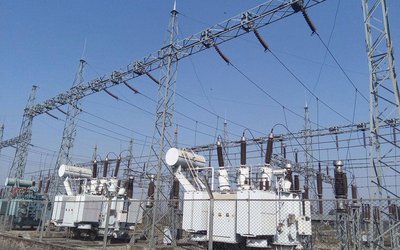Irrespective of the fact whether or not a country is on a socialist path to national development or on a capitalistic path, it equally holds true in either case that abundant electricity generation is a prerequisite for national development. There are two perfect examples from the experience of former Soviet Union and the United States
The former USSR
After the 1917 October Revolution the former USSR had launched on 21 February, 1920amid much fanfare the Goelronational development plan. It was clearly stated in the Goelro plan “Communism is Soviet Power plus electrification of the whole country”.
The Goelro plan called for the major restructuring of the Soviet economy based on total electrification. From late 1920 the Goelro State Commission for the electrification of Russia was in place with a target of quadrupling power production within 15 years which it achieved in 11 years. From 1932 the Goelro plan became the 5-year Soviet economic plan, which continued until the USSRcollapsed in 1989.
The USSR had built in a short period many big hydropower as well as thermal power projects to raise substantially the generation of electricitywhich helped the USSR to catch up with other highly developed countries in the field of industrialization.
The USA
Few years after First World War the USA economy was in greatdepression. Everywhere Industries had shut down and the workers were unemployed. In 1932 afterbeing elected as the president of the USA Franklin Roosevelt launched a grandiose plan “New Deal”to boost US economy.
The New Deal was a great success. One of the most important components of the New Deal program was the establishment of Tennessee Valley Authority (TVA) aimed at implementation of the Tennessee Valley Development hydropower projects. President Franklin Roosevelt wanted not only to provide jobs for people, but also raise the country out of Depression through Innovative programs. In 1933 the TVA was established with the intention of exploiting water resources to benefit Tennessee, Alabama, Georgia, Kentucky, Mississippi, North Carolina and Virginia.
The TVA, which existseven today, is the nation’s largest public sector power provider. TVA had built 16 dams between 1933 and 1944. Before the TVA, dams were built exclusively for either electricity generation or flood control or any other specific purpose. The TVA was able to include energy generation as well as flood control and other components within a single dam. This type of multipurposedam projects soon begun to be implemented in other parts of the world.
Along with providing the USA with low-cost electricity, the TVA also manages a wide range of environmental and technical issues. President Roosevelt saw the TVA as benchmark by which the rates of private utility companies could be evaluated. Seen as a threat to the private sector, the TVA was sued by many power companies during the 1930s. The TVA was victorious in a landmark case ruled by Supreme Court.
Nepal’s Worsening Power Shortage Crisis
At present Nepal is reeling from acute shortage of electric power. Most of our industries are on the verge of collapse. People are facing great hardship due to long hours of load -shedding. Entire country is now pushed to an extreme desperate situation. It has even started to cross the mind of some of our decision makers that the import on massive scale electricity from India or the implementation of big diesel power plant projects is the only solution to end the present power shortage crisis.
Unfortunately our country has failed to utilize its vast hydropower potential to resolve power shortage problem despite the fact that our present demand for power is quite insignificant in comparison with other smaller countries of our region comparable to our country in size and population. At present our country’s economic growth has been almost totally hindered by acute power shortage.
Need for Rationalization of Energy Planning
It is possible to improve substantially the present electric power shortage situation within relatively a very short period perhaps at less than half the investment earmarked by the government for the generation of electric energy in near future if our power development plans are adequately rationalized based on sound engineering practices. Selection of the most appropriate hydropower projects for implementation in near future from the multitude of identified projects would be crucial to overcomequickly our present energy shortage crisis.
It is obvious that the implementation of large storage type high dam project in near future cannot be top priority. The focus must be on implementation of run-of- river type hydropower projects that could be implemented within relatively a short period. The proposed projects must be suitable for generation of abundant cheap firm energy in dry seasons when the demand for electricity is the highest. We should pay special attention to the fact in course of selection of projects to be implemented in near future that there would be a great economic advantage in fully utilizing the peaking capacity of existing hydropower plantsas explained hereinafter.
Grossly Underutilized Existing Hydropower Capacity
All the NEA owned hydropower projects, like the Kali-Gandaki, both Trisuli, both Marshyangdi, both Kulekhani and others are capable to run at full capacity even during the dry season periods. They have been built at enormous cost to supply electricity to meet the demand for peaking. Obviously, the generation cost of such peaking energy is always very high. Generation cost of peaking energy can be two to three times expensive in comparison to base load energy.
Unfortunately at present the full capacity of most of the hydropower projects built to generate high valued peaking energy has not been fully utilized during the critically important dry season periods. They are now operated to produce a very large proportion of cheap energy to meet the demand for base load. Thus, the reservoirs, high barrages, turbines, generators, transmission lines and civil structures provided to generate and transmit peaking energy have not been utilized to the full extent. It is one of the reasons why the generation cost of the NEA produced electricity is high.
Seasonal Energy is Worthless
In thecontext of Nepal the value of seasonal energy isvirtually worth nothing if such energy would not be fully utilized within the country. Until few years back the NEA was complaining that it is forced to purchase seasonal energy from private developers even though its own generation of seasonal energy was in surplus to demand.
The export of short duration seasonal energy might not be feasible because its value could be only equivalent to saving in costs of the fuels in Indian thermal plants as a result of substitution to electricity imported from Nepal. According to the World Bank financed Karnali Project report the value of such exported seasonal energy could be equal to only 10% of the value of the firm energy. Contrary to very low valuation of the seasonal energy, the cost of the transmission provided exclusively to export seasonal energy could be as high as 20% of the value of the firm energy.
Storage Projects Not Suited
Large storage projects like the Budhi-Gandaki project and West Seti project would not be suited to resolve quickly the present power shortage crisis because it would take quite a long time to make arrangement to recover irrigation benefits accruing to India. The irrigation benefits are found to be far exceeding the power benefit. For example, according to the detailed feasibility report of the Kankai Storage Dam Project carried out by the German Government in 1978 the annual irrigation benefit was found to be US Dollars 31.4 million whereas the power benefit was only US Dollars 7.2 million.
Conclusion
The vast potential of the run-of- river type hydropower projects should be effectively utilized to generate mostly the firm energy by curtailing excessive installed capacity. Similarly there is no need to rush to implement large storage dam projects to resolve quickly our present energy shortage problem without reaching an agreement with India on recovery of our country’s share from the vast irrigation benefits accruing to India from the use of greatly augmented regulated flow discharged from storage reservoirs built in our country at enormous cost sacrificing vast areas of productive lands.

Dr. A.B. Thapa
Thapa writes on water resources issue
- Dudhkosi Multipurpose Project
- Jul 11, 2022
- Dudh-Kosi Power Project And Kosi Treaty
- Sep 27, 2021
- Uttarakhand Glaciers And Recent Disaster: A Lesson To Our Country
- Mar 02, 2021
- Multipurpose Langtang After Melamchi: Inter-Basin Water Transfer
- Nov 04, 2020
- Large Storage Dams Projects Wary of Giving Away Children’s Inheritance
- Dec 22, 2019
















